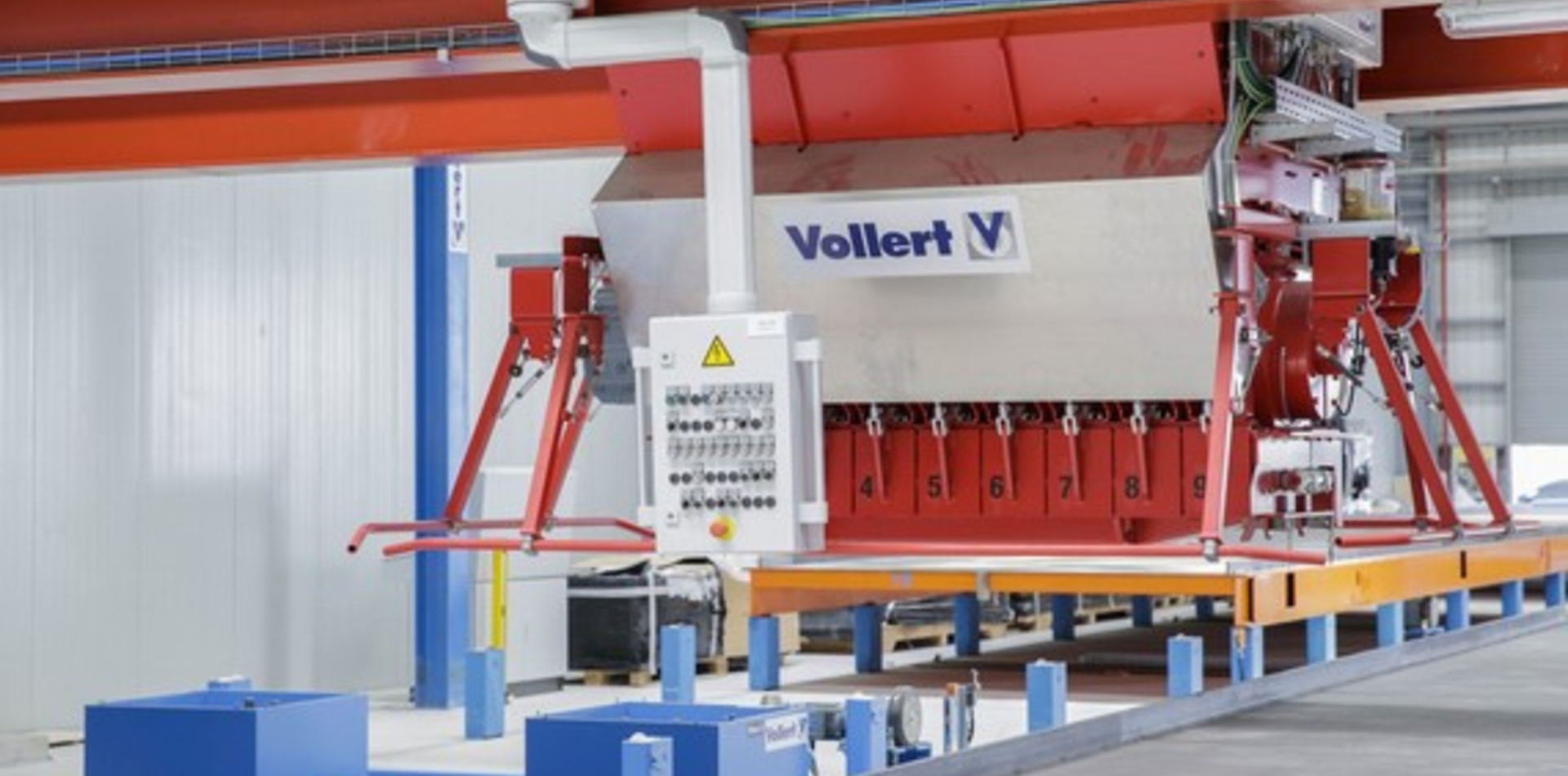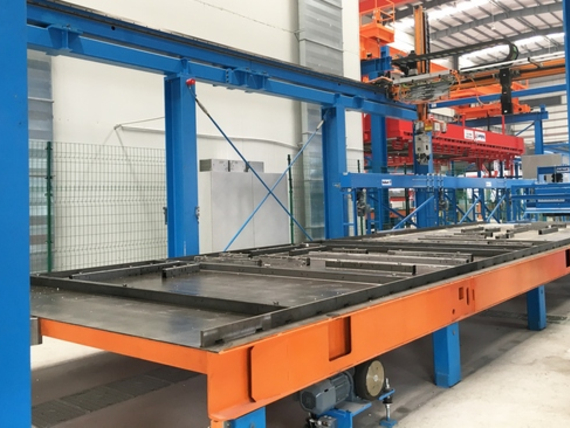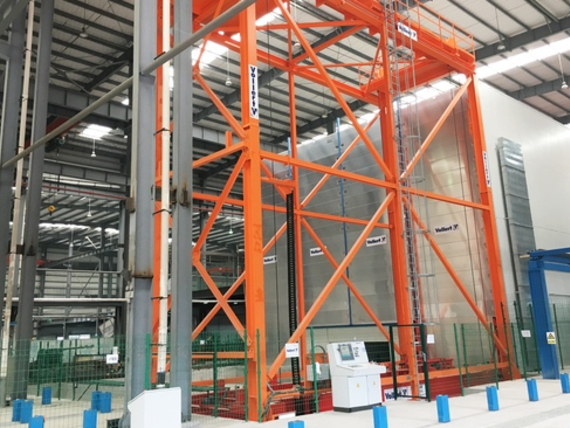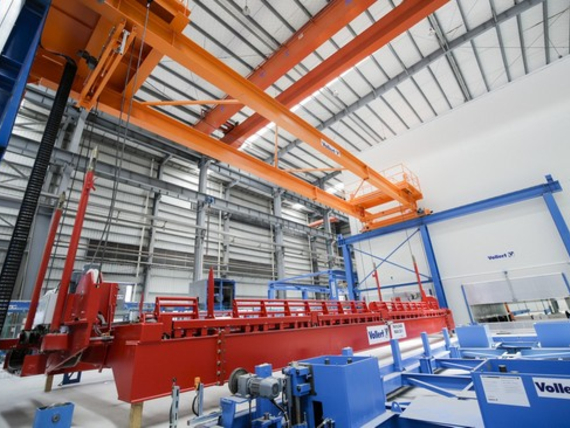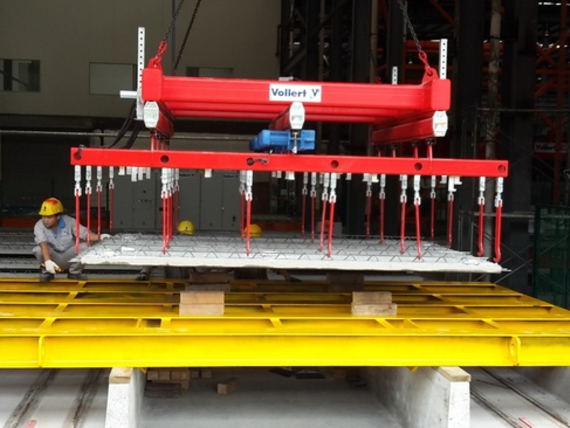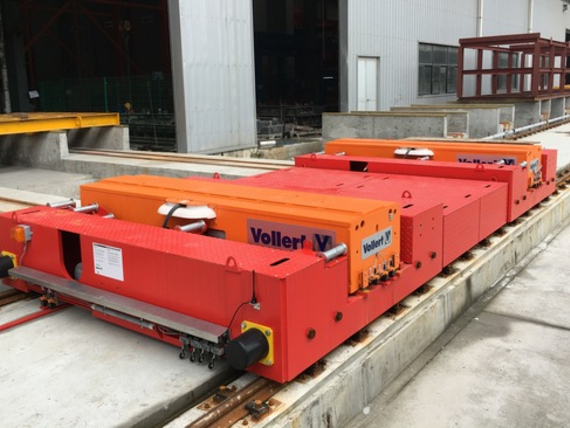The Chinese construction sector has been growing continually for years. The government and the national building industry have increasingly been relying on precast construction technology as an alternative to the conventional in-situ concrete construction to produce the urgently required living and office space. This is also relevant since many building complexes in the Chinese megacities will reach the end of their service lives in the next few years. They will have to be torn down and rebuilt. This cannot possibly be managed conventionally. Fixed schedules for construction projects from the architect's first pencil stroke and processes controlled in time as well as industrially in precast concrete production ensure a reliable construction progress in much shorter periods and high parts quality. The concrete rejects are also clearly minimised. "Simply said, the precast construction technology is a smart combination of optimally used raw material and efficient concrete factory technology", explains Hua Fan, General Manager of Baoye group, why precast concrete parts have grown immensely in dynamics and valuation in China in the course of the last 2 or 3 years. Inferior concrete quality is a thing of the past thanks to new production methods and state-of-the-art machines. "Precast concrete parts will also reduce construction costs in China by 10 to 15%. It is the only answer to the rising demand for cost-efficient office and residential space." "China is currently experiencing a downright pioneering spirit. However, the plant technology of the precast concrete plants currently producing in China is mostly from the 1980s or even older," Björn Brandt, Vice President at Vollert, explains. "That's not comparable to the modern highly automated plant and machine technology that we have today. As now, in close dialogue with Shanghai Baoye management, we consult our customers on the current construction systems and technology standards and develop a turn-key system solution tailored to the customer for modern precast concrete parts production. We include important framework conditions such as climate, labour market, raw material prices or country-specific regulations such as taxes and provisions in our considerations as well."
Floor slabs and double walls for mega construction projects
The Nanjing Golden Eagle Tiandi Square at 368 m, the Zhuhai Center at 330 m and the Headquarter Tower of the Kuwait Central Bank are deemed veritable architecture highlights. Shanghai Baoye group, one of the leading state construction companies in China, was the general builder of this mega project. "As pioneers and trendsetters, we have been constructing demanding, multi-level building complexes in the entire Asian and Arabian area since the early 2000s, increasingly also using the new precast construction systems," reports Hua Fan. "The intense research in the new construction systems is a main pillar of our business success. Another one is continuous investment in plant technology for parts production. Therefore, we decided in mid-2015, to increase our annual capacities by up to 800,000 sqm of wall and slab elements for increasingly large and complex construction projects, in particular in the metropolitan region and booming city of Shanghai, and to develop a completely new precast concrete production line." The first floor slabs and double walls have been delivered from here to the global construction projects since June 2016. This is produced on a modern circulation-based plant system with state-of-the-art machine technology 'made in Germany' of German plant constructor Vollert. Up to 75 pallets are continually circulating between the individual stations and storage positions here. "We have a claim to very high parts quality. Additionally, we rely on modern architecture with optimal function and high service life of the construction system used. Modern precast construction requires defect-free walls and slabs in terms of parts geometry and dimensions," Hua Fan explains the requirements that have already been posed at commencement of the project. Modern shuttering systems and precise high-performance shuttering and demoulding robots play a decisive role in this. "The first work step in the production process surely at the same time is one of the most important ones for the final quality of the later concrete parts," says Björn Brandt from Vollert. For this, a SMART SET shuttering robot places the shuttering profiles precisely onto the prepared circulating pallet at high movement speeds. Like contour plotting, this is done fully automatically CAD-/CAM-controlled. Demoulding by robot technology increases the service life of the shuttering systems while also permitting short cycle times per circulating pallet. Automatic shuttering is followed by several manual moulding and reinforcement stations. "A 'standard line' and a separate 'fast line' split up parts at different complexities into different lines," explains Björn Brandt. This way, parallel transport lines can be used to produce floor slabs or top and bottom shells for the double walls, depending on building project and degree of utilisation. Standstill or waiting times are minimised, while plant productivity is clearly increased.
A modern SMART CAST automatic concrete distributor applies precisely the specified concrete volume. The MES production control system produces an optimised movement programme for the next concreting process as well. An absolute path and permanent weight measurement permit precisely dosed application volumes. The subsequent compaction of the concrete takes place by low-frequency, extremely low-noise SMART COMPACT2 compaction station. This produces the optimal upper shell in exposed-concrete quality, as well as an optimised compaction of the more strongly reinforced carrying shell of the double wall. Depending on the component weight, the imbalances are synchronised differently. This permits optimised circular shaking movements at low noise development. Much stiffer concrete can be processed this way as well.
Highly efficient processes in double wall production and loading technology
If a double wall is produced, the storage retrieval machine will take over the upper shell from the insulated and steam-heated shelf towers of the curing chamber after pre-curing, and pass them on to a state-of-the-art ceiling-running VArio TURN pallet turning device. The pallet is locked via a hydraulic clamp in the turning traverse before the first mould is clamped pneumatically with a clamping arm system. The height latch of the clamping arms is variable, so that insulations for core-insulated double walls are no longer an obstacle, to ensure safe clamping. Then the first shell is turned by 180o. After submersion of the grid carriers of the first shell into the fresh concrete of the second shell, synchronous shaking of both shells will produce the double wall. Synchronous shaking without relative movement of the shells guarantees for high product quality and prevents concrete de-mixing in the area of the reinforcement. The additional clamp between the two shells doubles the shaking energy. This leads to high double-wall accuracy as well as a higher-quality surface property. "For up to 800,000 m2 annual wall/slab area, a special focus also is on loading technology, however," says Björn Brandt. The vertical lift-off of the double walls is performed by a VArio TILT high-performance tilting station that has a hydraulically moving supporting beam. The supporting beam moves against the fixed side mould to prevent slipping of the concrete element during tipping. Loading as such takes place securely via a pneumatic lifting traverse by Nuspl. Attached with a special stabilisation device, this takes over the double wall via lifting anchors and loads it onto depositing frames. Element ceilings are provided horizontally in transport-capable stacks with a lifting device. A SMART LOGISTIC truck with a maximum lifting load of 32 t connects the loading area to the storage place in the outdoor area. From there, the loading frames are transported on to the final loading positions on a movement length of more than 100 m.
A milestone in the Chinese construction industry
"With the new precast concrete factory in Shanghai, where we have been producing floor slabs and double walls for our new mega construction projects since mid-2016, we are achieving a true milestone for China and throughout the Asian area," says Björn Brandt. For this, it is important that all processes and quality levels are continually monitored and complied with. "The entire plant configuration and all storage processes are centrally controlled via a modern SAA control computer system." The smart MES production control system controls the individual work stations, creates the pallet assignments, routes the pallet transport, administrates removal sequences and curing times.
Vollert has been chosen as technology and plant supplier for a very specific reason. "Even through the investment costs are higher than those of Asian providers on the market at first glance. In the end, the plant productivity and profitability figures are decisive. They clearly support plant technology 'made in Germany'. In the new production factory for precast parts in Shanghai, we produce up to 160 m2 wall/slab area per hour," explains Hua Fan.


